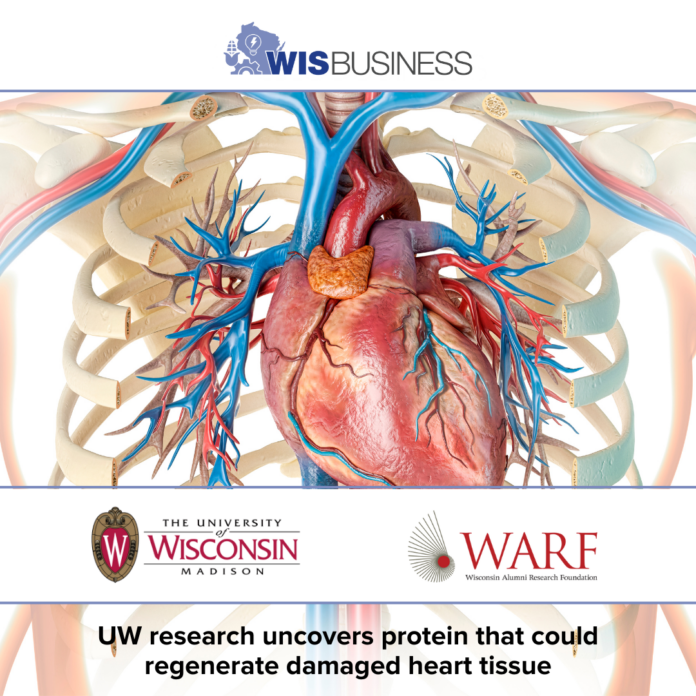21 Feb UW research uncovers protein that could regenerate damaged heart tissue
 UW-Madison researchers have identified a protein that could be used to regenerate damaged heart tissue, giving heart failure patients hope for a potential treatment.
UW-Madison researchers have identified a protein that could be used to regenerate damaged heart tissue, giving heart failure patients hope for a potential treatment.
The Wisconsin Alumni Research Foundation recently spotlighted the breakthrough as a “top licensing prospect” among UW-Madison health inventions. The protein, called LRRC10, was discovered by researchers Ahmed Mahmoud, Timothy Kamp and Youngsook Lee, who specialize in heart development and cardiac disease.
Improving treatments for coronary artery disease have led to better survival rates, according to Kamp, but many of these patients experience heart failure as their heart is unable to grow back damaged tissues. In remarks provided by WARF, Lee said the heart is the “least regenerative” organ.
“The crucial problem is to understand how we can make the cardiac muscle cells that were once damaged induced to divide, and so they regenerate and restore the function,” said Lee, a professor emerita in the university’s Department of Cell and Regenerative Biology.



